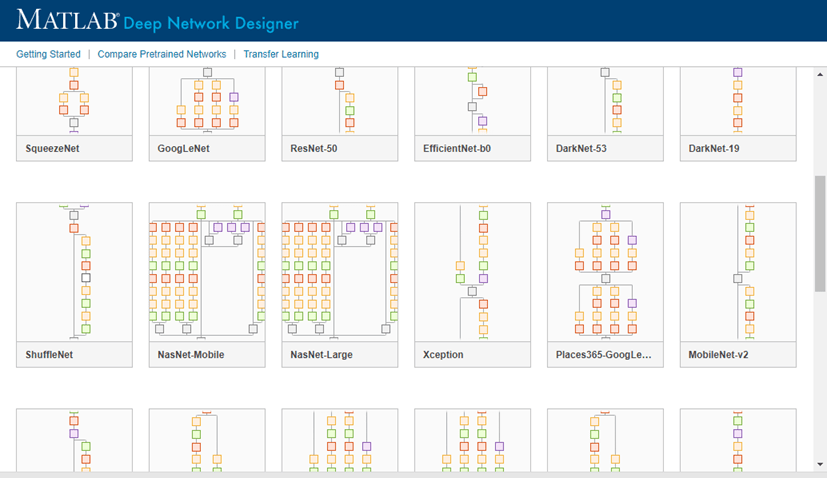vgg16
VGG-16 convolutional neural network
Description
VGG-16 is a convolutional neural network that is 16 layers deep. You can load a pretrained version of the network trained on more than a million images from the ImageNet database [1]. The pretrained network can classify images into 1000 object categories, such as keyboard, mouse, pencil, and many animals. As a result, the network has learned rich feature representations for a wide range of images. The network has an image input size of 224-by-224. For more pretrained networks in MATLAB®, see Pretrained Deep Neural Networks.
You can use classify to
classify new images using the VGG-16 network. Follow the steps of Classify Image Using GoogLeNet and replace GoogLeNet with
VGG-16.
To retrain the network on a new classification task, follow the steps of Train Deep Learning Network to Classify New Images and load VGG-16 instead of GoogLeNet.
net = vgg16
This function requires Deep Learning Toolbox™ Model for VGG-16 Network support package. If this support package is not installed, then the function provides a download link.
net = vgg16('Weights','imagenet')net = vgg16.
layers = vgg16('Weights','none')
Examples
Output Arguments
References
[1] ImageNet. http://www.image-net.org
[2] Russakovsky, O., Deng, J., Su, H., et al. “ImageNet Large Scale Visual Recognition Challenge.” International Journal of Computer Vision (IJCV). Vol 115, Issue 3, 2015, pp. 211–252
[3] Simonyan, Karen, and Andrew Zisserman. "Very deep convolutional networks for large-scale image recognition." arXiv preprint arXiv:1409.1556 (2014).
[4] Very Deep Convolutional Networks for Large-Scale Visual Recognition http://www.robots.ox.ac.uk/~vgg/research/very_deep/
Extended Capabilities
Version History
Introduced in R2017a
See Also
Deep Network Designer | alexnet | vgg19 | googlenet | densenet201 | resnet18 | resnet50 | resnet101 | inceptionresnetv2 | squeezenet



